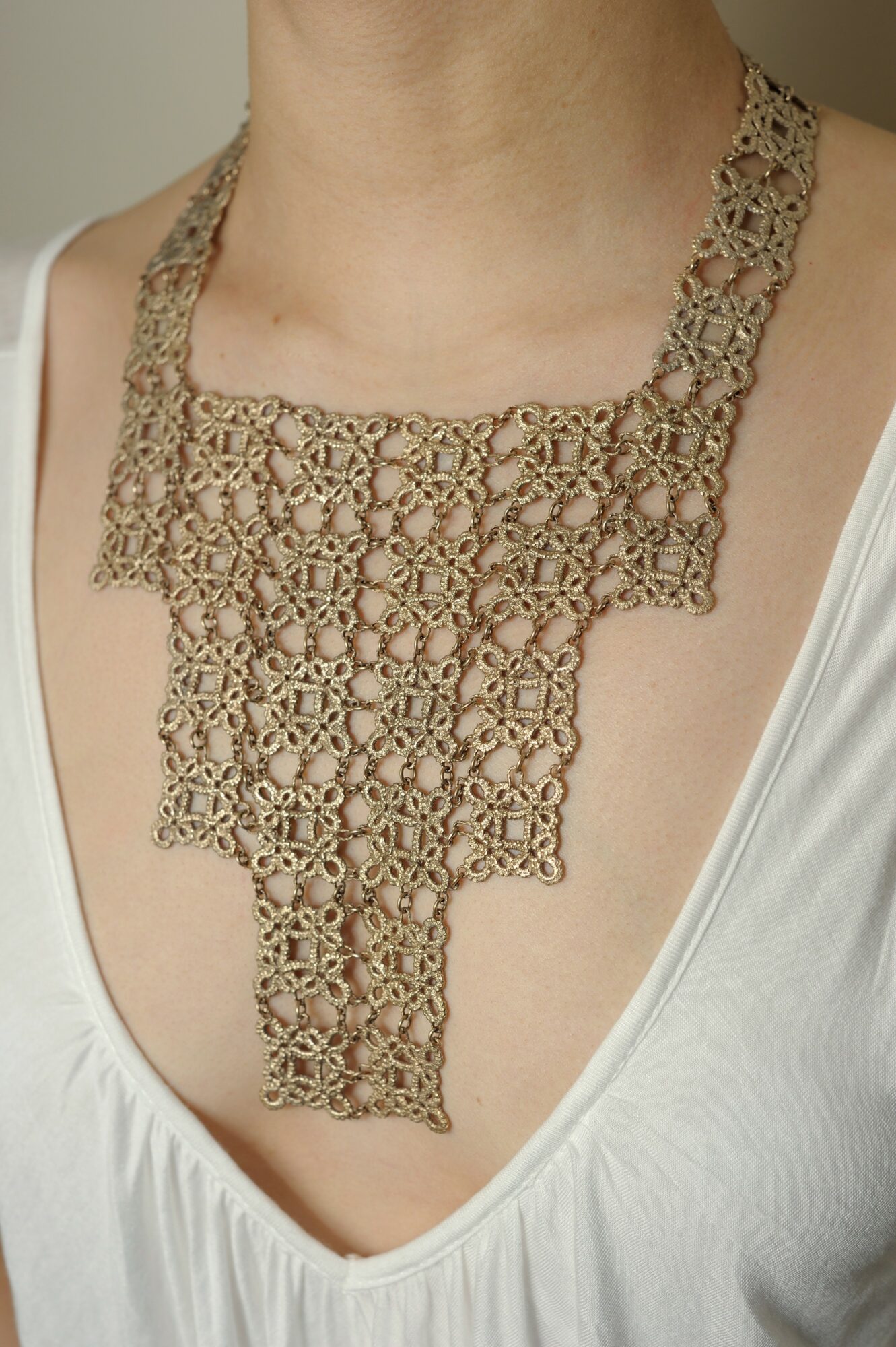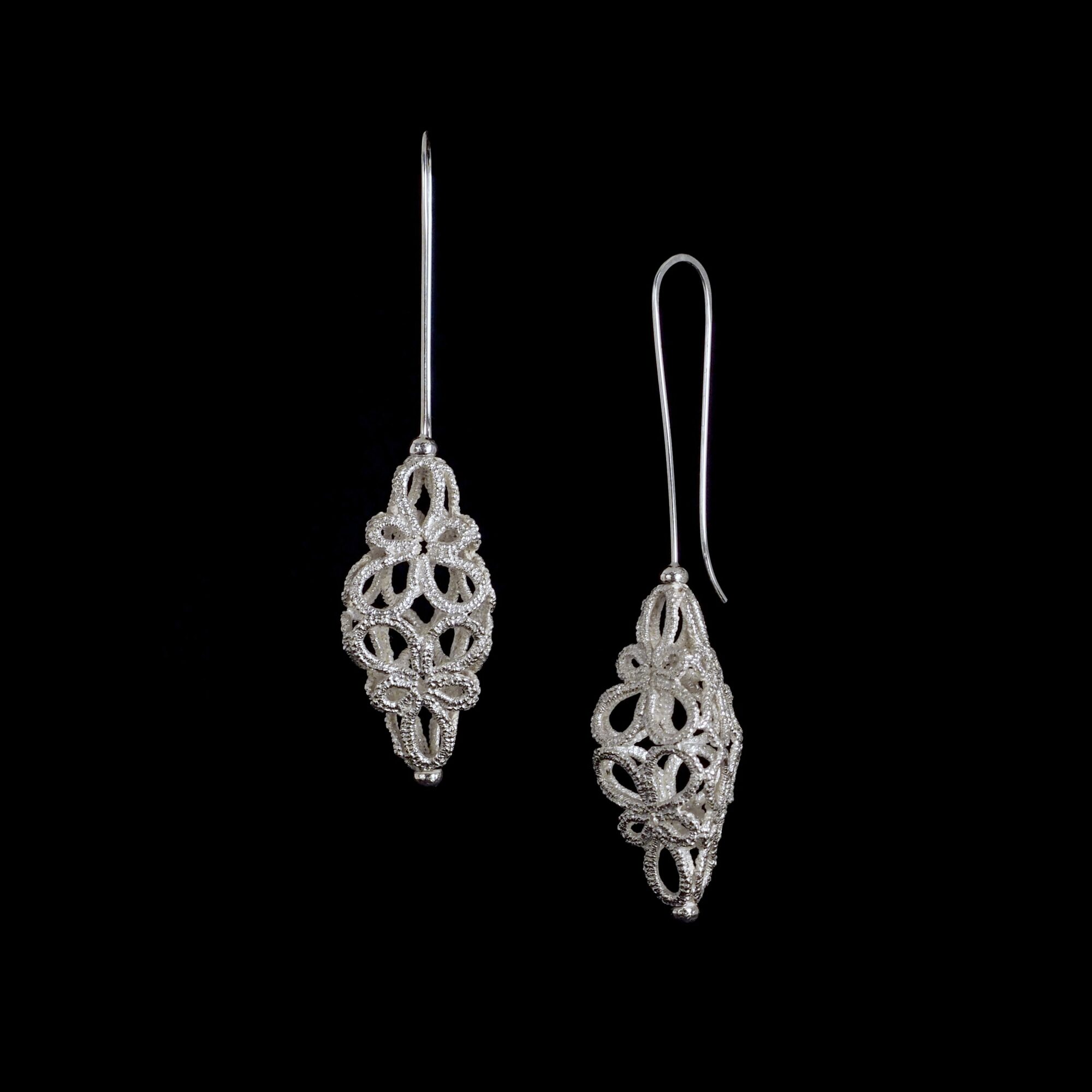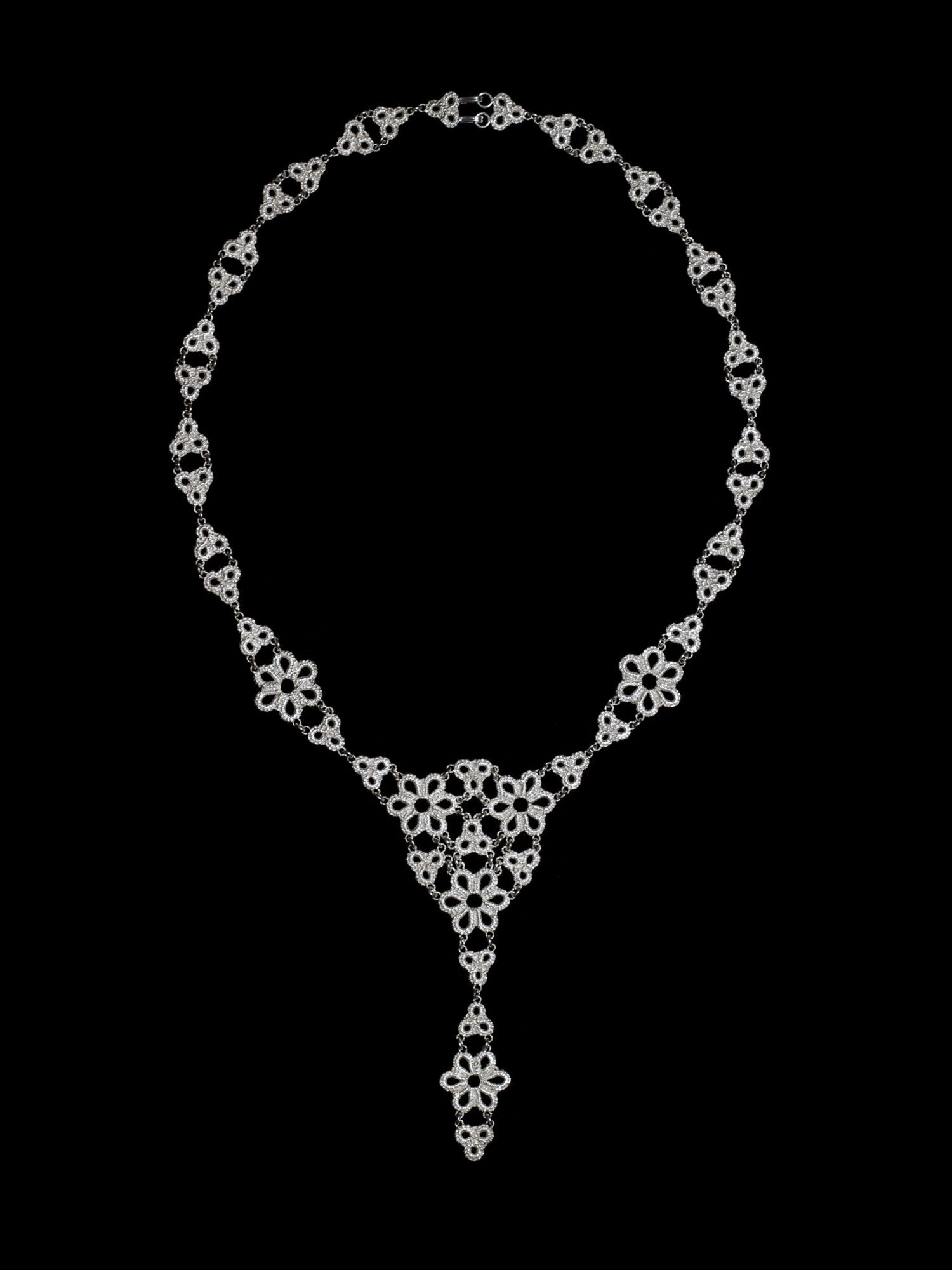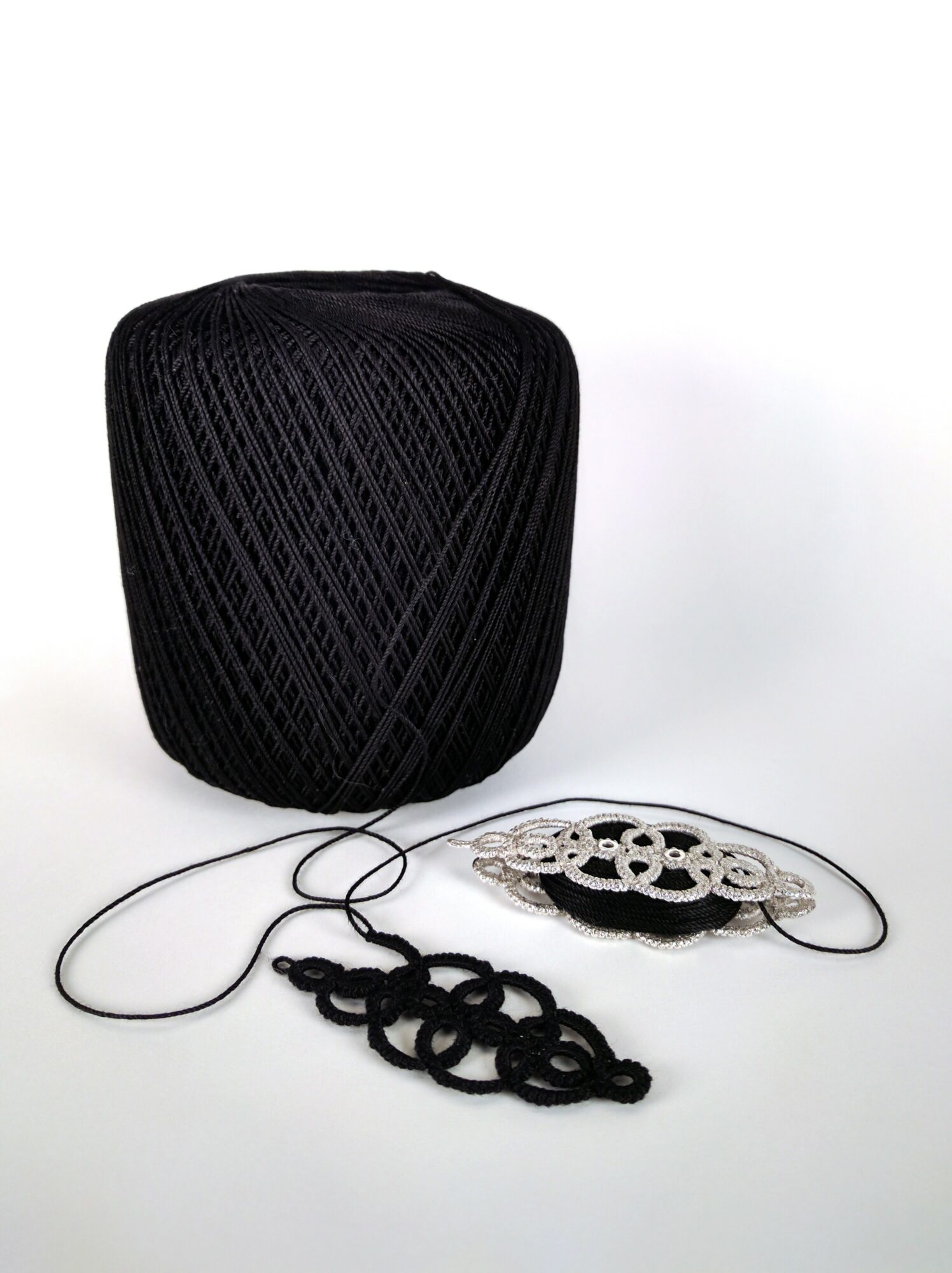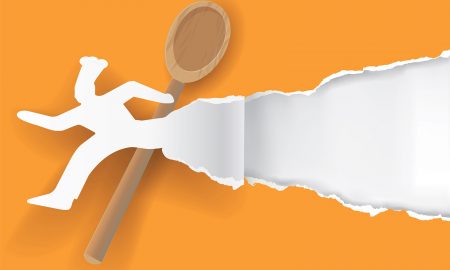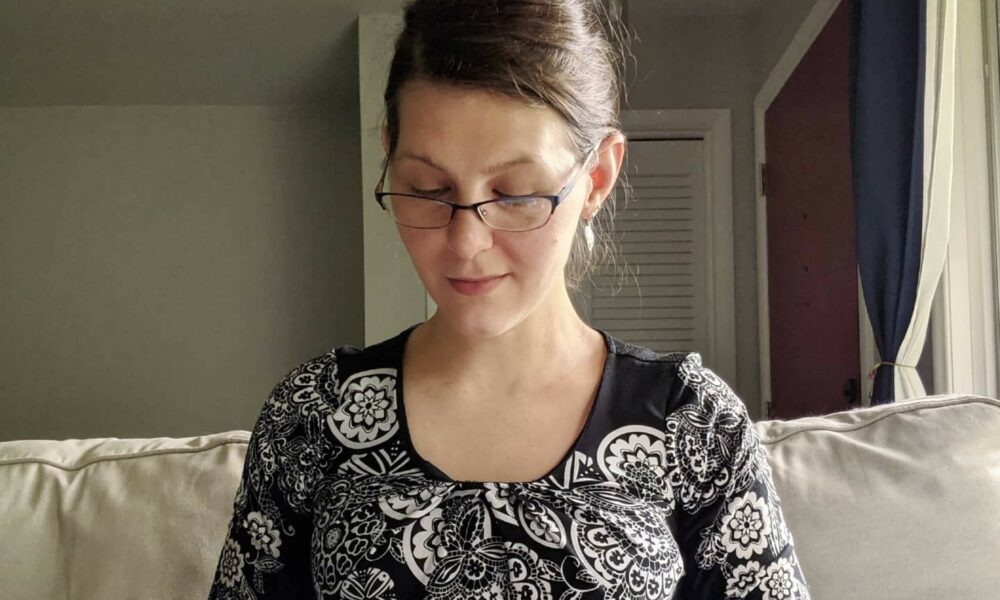

Today we’d like to introduce you to Lorraine Kolasa.
Hi Lorraine, thanks for sharing your story with us. To start, you could tell our readers some of your backstories.
Sewing and fiber crafts have been a hobby for almost as long as I can remember (I had even dabbled in lacemaking in my early 20s). My formal background is in jewelry/metalsmithing, and I was a strict fabrication artist for the first few years of my practice. It was only after returning to school for an independent study (and consequently getting access to a bunch of equipment I didn’t have) that I started to experiment with casting, specifically found object casting. (I’d always liked the process, but my designs never made sense for casting, and I hated wax carving, anyway.) I settled on lace mostly on a whim—I knew it was a texture I’d never be able to reproduce otherwise—and while the results weren’t perfect, they were promising enough that I knew it was something I wanted to keep exploring. Initially, I worked with store-bought lace, but it became limiting fairly quickly, so I eventually took the plunge and not only started making, but also designing my own. I started with tatting because I had some experience, but I have since branched out to crocheted lace, bobbin lace, embroidery, and more.
Please talk to us about the challenges and lessons you’ve learned. Looking back, would you say it’s been easy or smooth in retrospect?
There was a learning curve and a lot of problem-solving along the way. First, I had to figure out a way to make the lace non-porous because otherwise, the mold-making material would soak into it and ruin the casting. To do that, I started dipping the pieces in wax, but then there was the issue of making sure the wax didn’t obscure the details of the lace. On top of that, I had to be careful not to melt any polyester lace or burn any cotton lace. It took a long time for me to figure out a good system, and even now, I occasionally get a casting failure simply because the process isn’t an exact science. (You learn quickly in casting only to become attached to a piece once it comes out in metal!) It’s all part of the thrill of creating, though.
As you know, we’re big fans of you and your work. For readers who might need to become more familiar, what can you tell them about what you do?
My work combines textiles and metalsmithing, usually achieved by casting handmade lace into metal, though not always—I’ve begun to incorporate color by casting plastic canvas and then embroidering on it after the fact, for instance. The process’s transformation fascinates me—how something so soft and delicate can turn into something so complex and durable. Most of my jewelry work emphasizes the preciousness of the item and the importance of the skills used to create it. At the same time, my larger body pieces take a lot of inspiration from traditional armor and chain maille. Recontextualizing these things forces people to look at them differently. My larger pieces especially tend to play with gender dichotomy—the combination of the traditionally feminine (fiber arts) with the historically masculine (something worn to war).
Can you share something surprising about yourself?
I’m a big science nerd! I come from a family full of engineers and tech people, and I minored in chemistry.
Contact Info:
- Website: www.lorrainekolasa.com
- Instagram: www.instagram.com/lorrainekolasa
- Facebook: www.facebook.com/lorrainekolasastudios
- Twitter: twitter.com/lorrainekolasa
